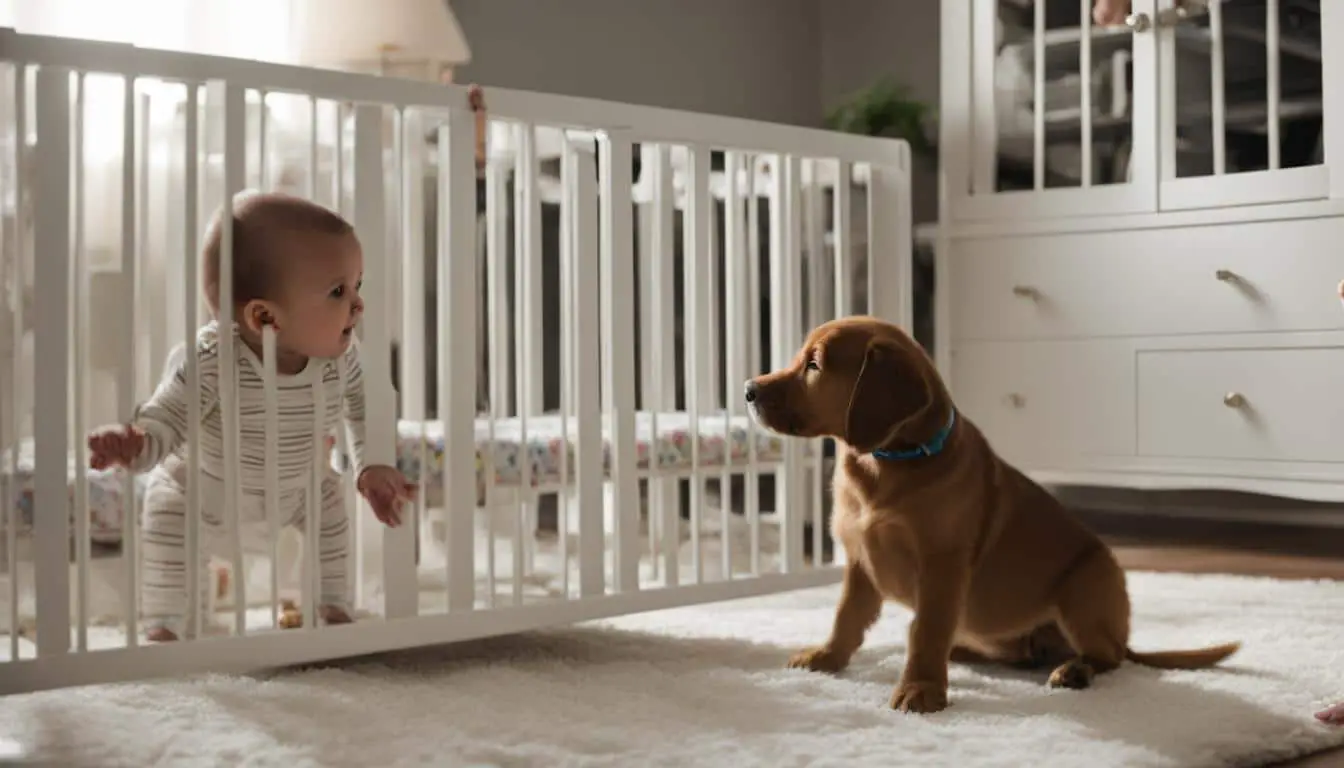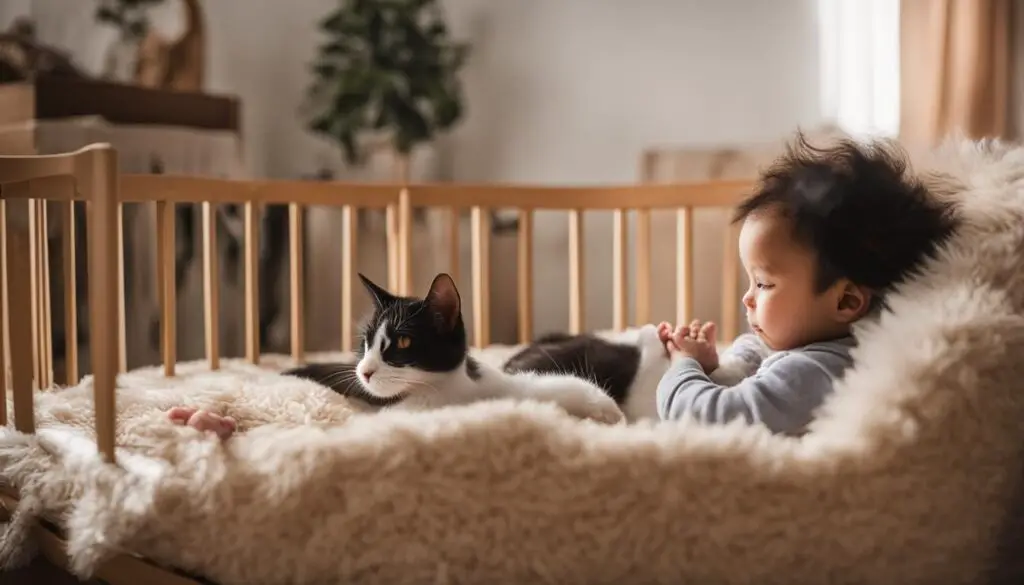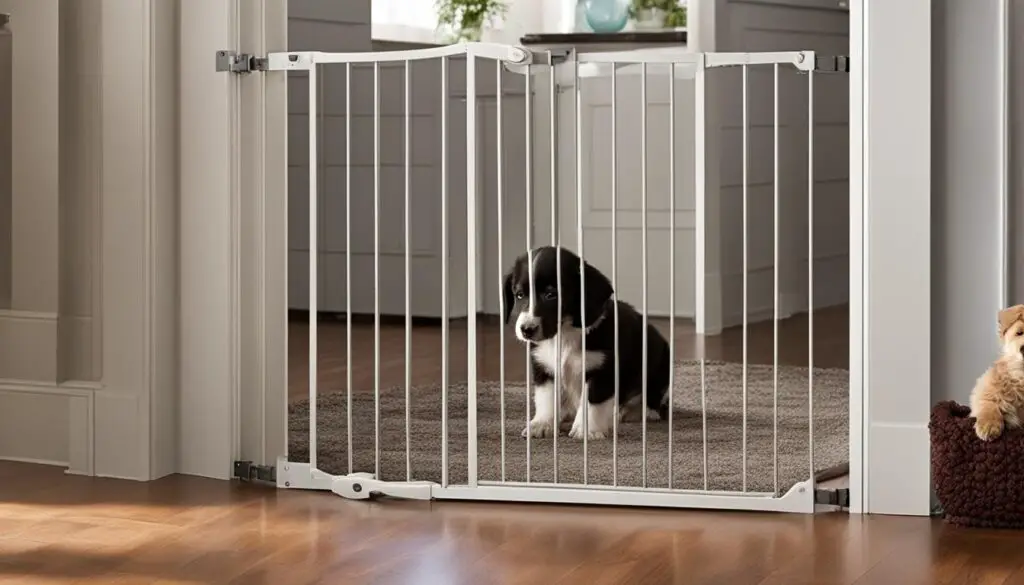
Introducing Your Pet to Your New Baby: A Guide
Introducing a new baby to your pets can be a challenging time. Pets can often become anxious and stressed by the presence of a new member in the household. It is important for parents to plan ahead and take the necessary steps to ensure a smooth and harmonious transition. According to experts, it is recommended to prepare the environment, model new behaviors, and always supervise interactions between pets and infants. This article will provide a comprehensive guide and practical tips for introducing your pet to your new baby.
Key Takeaways:
- Introducing a new baby to your pets requires careful planning and preparation.
- Create a pet-friendly environment to ensure a smooth transition.
- Address any behavior issues your pet may have before bringing the baby home.
- Always supervise interactions between pets and infants.
- Make special time for your pet to prevent feelings of neglect.
Planning Ahead: Preparing Your Pet for the Arrival of the Baby
Preparing your pet for the arrival of your new baby is an important step in creating a harmonious home environment. By planning ahead and addressing any potential issues, you can ensure a smooth transition for both your pet and your baby. Here are some key tips to help you prepare:
1. Schedule Medical Tests for Your Pets
Before the baby arrives, it is essential to schedule medical tests for your pets. This includes testing for conditions such as toxoplasmosis in cats and ensuring all pets are up-to-date with their vaccinations. Schedule a visit to your veterinarian to discuss any concerns and ensure your pets are in good health.
2. Address Behavior Issues
If your pet has any behavior issues, now is the time to address them. Common issues include jumping, barking, or aggression towards children. Working with a professional dog trainer or a veterinary behaviorist can help you address these issues and create a safe and calm environment for your baby.
“Addressing behavior issues early on can prevent any potential problems and make the transition smoother for everyone involved.” – Dr. Jane Wilson, Veterinary Behaviorist
3. Learn Your Pet’s Body Language
Take the time to learn and understand your pet’s body language and cues. This will help you recognize signs of stress or discomfort and prevent any potential conflicts. Knowing when your pet needs space or is feeling anxious can help you create a more positive and relaxed environment for everyone.
4. Create a Safe Space for Your Pet
Designate a separate space for your pet where they can feel safe and secure. This can be a quiet room with their bed, toys, and food bowls. Make sure this space is off-limits to your baby and provide plenty of positive reinforcement when your pet spends time in their designated area.
| Pet Preparations | Baby Preparations | |
|---|---|---|
| 1 | Schedule medical tests for your pets | Childproof your home |
| 2 | Address behavior issues | Set up the nursery |
| 3 | Learn your pet’s body language | Purchase baby essentials |
| 4 | Create a safe space for your pet | Establish a routine |
By taking these proactive steps, you can ensure that both your pet and your new baby can coexist safely and happily. Remember to always supervise interactions between your pet and your baby, and never leave them alone together. With careful planning and preparation, you can create a loving and harmonious home environment for everyone involved.

Creating a Pet-Friendly Environment for Your Baby
When bringing a new baby into the family, it is crucial to create a pet-friendly environment that ensures the safety and well-being of both your pet and your baby. Pet-proofing your home is essential to prevent any accidents or potential conflicts. Here are some practical steps to help you create a harmonious living space for your pet and baby.
Designate Pet and Baby Zones
One effective strategy is to designate separate areas for your pet and your baby. This helps establish boundaries and ensures that both have their own safe spaces. Create a baby zone where your baby’s crib, changing table, and toys are located. This area should be off-limits to your pet. Similarly, create a pet zone with your pet’s bed, toys, and food and water bowls. This will allow your pet to have their own space to relax and feel comfortable.
Pet-Proof Your Home
Pet-proofing your home is crucial to ensure the safety of your baby and pet. Block off any areas that could pose a danger to your baby or that your pet could damage, such as staircases or rooms with fragile items. Install baby gates to prevent your pet from entering certain areas. Keep small objects, toxic plants, cleaning supplies, and electrical cords out of reach of both your pet and your baby. It is also important to secure any loose wires or cords to prevent your pet from chewing on them.
Ensure Pet Safety
While creating a pet-friendly environment, it’s important to meet the needs of your pet to prevent any feelings of neglect. Provide your pet with plenty of exercise, mental stimulation, and attention. Keep your pet’s supplies, such as food, treats, and medications, in a safe and secure place. If you have a dog, ensure they have regular walks and playtime. For cats, provide scratching posts and interactive toys. By ensuring your pet’s needs are met, you can help reduce any potential behavioral issues that may arise during this transition period.

| Benefits of Creating a Pet-Friendly Environment | Steps to Pet-Proof Your Home |
|---|---|
| 1. Establishes boundaries and promotes harmony. | 1. Block off dangerous areas like staircases. |
| 2. Ensures the safety of both your pet and your baby. | 2. Install baby gates to restrict access to certain rooms. |
| 3. Reduces the risk of accidents or conflicts. | 3. Keep small objects and toxic substances out of reach. |
| 4. Provides your pet with their own space to relax and feel comfortable. | 4. Secure loose wires and cords to prevent chewing. |
Conclusion
Introducing a new baby to your pets is a significant milestone that requires careful planning and consideration. By following the steps outlined in this guide, you can ensure a harmonious home transition for both your pet and your baby.
Creating a pet-friendly environment is crucial to the success of this introduction. By pet-proofing your home, designating specific areas for your pet and baby, and ensuring your pet’s needs are met, you can foster a safe and comfortable space for everyone.
Supervision is key when it comes to interactions between pets and infants. Always be present during these encounters to prevent any potential harm or accidents. Additionally, taking the time to understand and address any behavior issues your pet may have will contribute to a smoother transition.
Remember, a harmonious home transition involves not only the successful integration of your baby and pet but also the continued care and attention you provide to your furry friend. By making special time for your pet and ensuring they do not feel neglected, you can maintain a healthy and loving relationship with both your pet and your new baby.
FAQ
How should I prepare my pet for the arrival of the baby?
It is important to schedule medical tests for your pets, address any behavior issues, and learn their body language and cues.
What should I do to create a pet-friendly environment for my baby?
Give your pet time to adjust to new furniture and baby gear, designate certain areas as off-limits, and make sure their needs are met.
How should I introduce my pet to my new baby?
Always supervise interactions, take special time for your pet to prevent feelings of neglect, and ensure a safe environment for both the baby and the pet.